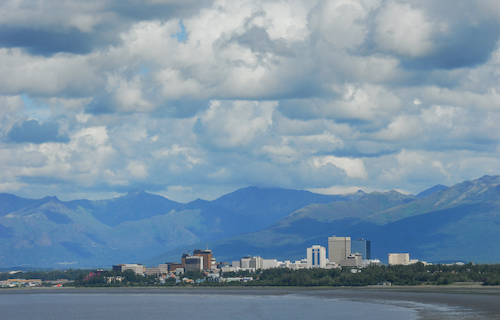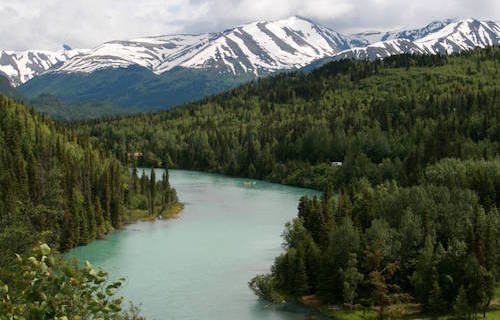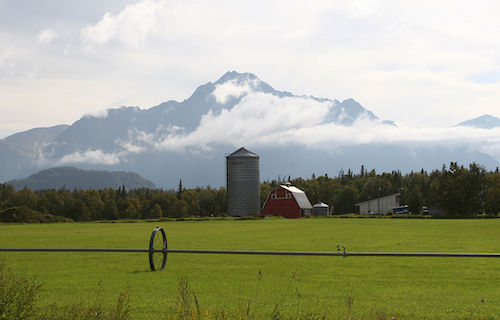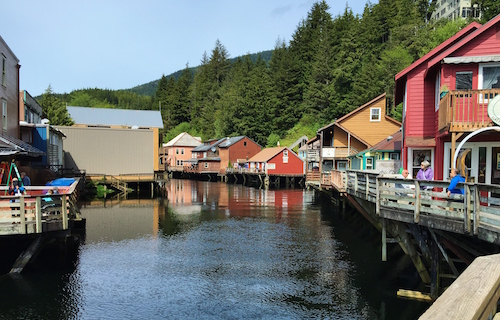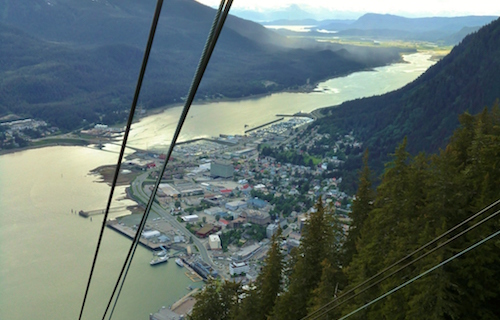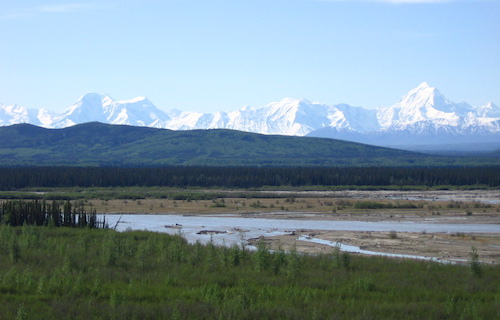Floor Speech: Murkowski Introduces Bill to Create a National Volcano Monitoring System
*** As Prepared for Delivery ***
"Mr. President, today I am rising to talk about an issue that has captivated my constituents in the State of Alaska. We have got a mountain that is erupting. Mount Redoubt, which is located about 150 miles southwest of Anchorage, our largest community, has been more than active in the past week or so generating a great deal of press, a great deal of interest, and a considerable amount of impact in my State. So I wanted to take a few minutes this afternoon to talk about what is happening up North, talk a little bit about the importance of volcano monitoring.
"I think we are all aware that there have been some recent comments made about Federal spending for volcano monitoring, and the suggestion that perhaps this might be wasteful money in that we do not have any need to be monitoring volcanos.
"I can assure you that monitoring volcanos is critically important to the Nation, to the world, and particularly to Alaska right now, where, as I say, we are being held hostage by a volcano.
"A little bit of a personal note here. This afternoon--my boys' spring break concluded last evening. We have been up in the State enjoying spring skiing. And they are grounded by Mount Redoubt. They may be home Wednesday evening. Now, others might think this is a bad thing, but for these young pages here this morning, when you are 17 and you are shut out of school for an additional 3 days after spring break concludes, and you have to stay in Alaska and keep skiing, maybe the volcano is not a bad thing.
"But there is a very serious aspect to what we are talking about. Mount Redoubt has erupted 17 times now since March 22. And when it was initially under watch, you would see the steam and the haze coming off the volcano. But then we started to see some pretty significant eruptions, eruptions that would go 65,000 feet up into the air.
"This is a picture of Mount Redoubt. This was actually taken back in 1989, the last time Mount Redoubt was active. But what happens is these plumes go straight up into the air, get caught by the jet stream at 40- or 65,000 feet, and then that ash is dispersed throughout the State.
"What we have been seeing up North this week, and actually for about the past 10 days, is the cancellation of air flights, complete closure of the Anchorage International Airport over the weekend. Alaska Airlines alone has canceled about 230 flights. It has affected about 10,000 passengers, including my boys.
"What is happening as a result of this volcano does become quite personal. We have school districts down in the southern part of the State where they have experienced the ash fall-out, where the students have dust masks, respirator masks so they are not breathing the ash that is coming through.
"Home Depot made a point of staying open 24 hours a day so people could get the masks, the ventilator masks, get tape to put around their windows, around the doors, because this ash, this particulate is so fine that it comes underneath and into your home, it gunks up your computers, it clogs your car engine.
"It is most worrisome, most threatening, though, with airplane engines, the ash itself, this particulate that is like ground-up stone and has this very debilitating effect of messing up your engine. So what is happening is at the airports, the engines of the airplanes, if they are not inside, which we do not have the capacity for, are being wrapped in Saran Wrap--more sophisticated than Saran Wrap but having to be wrapped. Our military at Elmendorf and Ft. Richardson is looking to relocate their assets, so that these very fine precision aircraft are not in harm's way.
"A lot is happening as a result of this volcano and the series of eruptions. The volcanoes in Alaska make up well over three-quarters of U.S. volcanoes that have erupted in the last 200 years. About 50 volcanic eruptions occur around the world every year. This is according to USGS. It seems like a high number, but most of them are not eruptions that make much in terms of headlines.
"The United States ranks third, behind Indonesia and Japan, in the number of historically active volcanoes. That is why it is so very important to fund volcano monitoring, which in Alaska is through the Alaska Volcano Observatory. The AVO, as I call it, is one of five volcano observatories in the United States. It is a joint program of the USGS, the United States Geologic Service, the Geophysical Institute of the University of Alaska-Fairbanks, and the State of Alaska Division of Geological and Geophysical Surveys. The AVO is unique in the United States, and probably in the world, in that it is a thoroughly collaborative undertaking of Federal scientists, State scientists, university faculty, and students.
"AVO was formed in 1988, after an eruption of Mt. Augustine, and uses Federal, State, and university resources to monitor and study Alaska's hazardous volcanoes, to predict, to give that early warning, and record eruptive activity, and also to mitigate volcanic hazards to life and property.
"Alaska has over 30 active volcanoes that are currently being monitored by the AVO. There is no other observatory in the world that even comes close to that. The AVO also analyzes available satellite data twice daily from thermal anomalies and ash plumes at about 80 volcanoes in the North Pacific. Russian volcanos frequently put ash into areas where the United States has aviation safety responsibilities. Alaska's active volcanoes also offer superb opportunities for basic scientific investigation of volcanic processes. An important component of AVO's program is to conduct research at selected volcanic centers.
"Now, I mentioned the hazard to air traffic. I think it is important for people to understand that when we are talking about volcanic ash being in the air and being distributed, it is not just something that is dirty and an annoyance, but it has the potential to be life threatening and absolutely deadly. If the jet engines ingest the volcanic ash, the potential for catastrophe is very real.
"Back in 1989, December 15 of 1989, there was a Boeing 747 flying about 150 miles northeast of Anchorage and it went through the ash plume that had erupted from the Redoubt volcano. It was flying at night so they could not see they were flying into an ash cloud.
"We did not have the monitoring process, so the pilots were flying on through and it sucked in the ash at--I am not entirely certain what altitude they were flying when they first encountered the ash--but the plane, with 231 passengers aboard, lost more than 10,000 feet elevation. All four engines lost power. And they went down 10,000 feet. That is about 2 miles.
"Now, we do a lot of flying around here. Next time you are up in that airplane, look down and think about losing all of the power in your 747 and falling out of the sky almost 2 miles before these incredibly skilled pilots are able to restart the engines.
"They were able to land the airplane safely, no lives lost, but I cannot imagine what it would have been like to have been a passenger on that jet aircraft. The airplane suffered about $80 million in damage. All four of those engines were shot. And, again, the good news out of the story is that there was no loss of life.
"The FAA estimates, based on information provided by the FAA, that more than 80,000 large aircraft per year and 30,000 people per day are in the skies over and potentially downwind of many of Alaska's volcanoes, mostly on the heavily traveled great circle routes between Europe and North America and Asia. It is along this route, which coincidentally follows the northern portion of the Pacific Ring of Fire, that there are over 100 volcanoes capable of depositing ash into the flight path. Some are in Japan, many are in Russia, but about half of them are in Alaska. And by analyzing the satellite imagery and working with the National Weather Service to predict where the winds will carry the ash, AVO assists the FAA in warning aircraft of areas to avoid.
"Volcanic eruptions from Cook Inlet volcanoes--these are right around the south central area: Spurr, Redoubt, Iliamna, and Augustine--can have severe impacts, as these volcanoes are nearest Anchorage, which is obviously our largest population center.
"Back in 1989, when Redoubt blew before, I was working in an office, and essentially we were shut down because the ventilation system needed to be turned off, computers needed to be turned off and covered. The impacts economically and in all ways are very real.
"The last major series of eruptions of Mt. Redoubt were in 1989 and 1990. These eruptions totaled 23. So right now with Redoubt we are already up to 17. The 23 that took place in 1989 occurred over a 6-month period. We are seeing 17 eruptions over a period of about 10 days.
"These eruptions seriously affected the population, commerce, and oil production throughout Cook Inlet and air traffic about as far away as the State of Texas. Total estimated economic costs were about $160 million, making this eruption of Redoubt the second most costly in U.S. history after Mount St. Helens. It had significant impact on the aviation and oil industries as well as on the people of the Kenai Peninsula.
"As mentioned, this volcanic ash is fine bits of abrasive glass that can damage lungs, it can damage vehicles, electronic equipment. Right now, as we speak, in the area just outside of Anchorage, at Mount Alyeska, where I was a couple of weeks ago, we are hosting the U.S. National Ski Championships. We have got some of the country's finest athletes who are performing on that hill. They cannot race if they are breathing in this volcanic particulate.
"The Redoubt eruption also damaged five commercial jetliners. This was again back in 1989. It caused several days' worth of airport closures and airline cancellations in Anchorage and on the Kenai Peninsula. Drifting ash clouds disrupted air traffic as far away as Texas.
"International volcano monitoring is also a role of the Federal Government. It helped, very likely, to save many lives, and significant money, in the case of the 1991 eruption of Mount Pinatubo in the Philippines, where the United States had military bases at the time.
"The eruption back in 1991 lasted more than 10 hours and sent a cloud of ash as high as 22 miles into the area that grew to more than 300 miles across.
"The USGS spent less than $1.5 million monitoring the volcano and was able to warn of the impending eruption which allowed the authorities to evacuate residents, as well as aircraft and other equipment from U.S. bases there. The USGS estimates that the efforts saved thousands of lives and prevented property losses of at least $250 million.
"It is not enough, though, to justify a program by identifying a danger. The more important question is whether something can be done to reduce the impact of a volcanic eruption in terms of property damage and loss of life. That means getting people out of harm's way by providing advanced warning. That is exactly what the USGS Volcano Hazards Program seeks to do through the existing volcano observatories in the United States. Some may say there is an abundance of caution going on right now by shutting down the airport, by cancelling flights, by diverting flights. But as a mother whose sons are there and going to be relying on air travel, I want to make sure that we err on the side of caution.
"I want to make sure we are using those scientists who will tell us exactly when it is safe to be back up flying.
"The advances made in monitoring can now provide much more accurate and timely predictions of eruptions. Back in 1989, AVO was only able to provide a few days' warning before Mount Redoubt erupted. This year, they began to detect activity and notified the public a couple months before it eventually erupted. The biggest challenge remains finding an adequate and stable source of funding. The USGS Volcano Hazards Program has been constantly underfunded. Both USGS and the FAA provide funding, but it is not enough to manage all of the observatories or provide for an expansion of the system to cover increased monitoring and volcano research.
"It is because of inadequate funding and the critical importance of this program that I intend to introduce a bill that will provide funding stability volcano monitoring needs. This program shows that with a modest investment, a very large benefit can be produced in reducing the impacts of catastrophic events. My legislation will establish a national volcano early warning and monitoring system within the United States Geological Survey to monitor, warn, and protect citizens from undue and avoidable harm from volcanic activity. USGS will coordinate a management plan with other relevant Federal departments, including the Department of Transportation, FAA, the National Oceanic and Atmospheric Administration, the Department of Homeland Security, and the Federal Emergency Management Agency. The legislation authorizes appropriations annually to the Department of Interior to carry out the act.
"I appreciate the attention given me on this issue this afternoon. As I mentioned, all eyes are upon the State of Alaska right now as we watch this volcano, but this is not the only one we are actively monitoring and watching. We want to make sure that not only the residents of the State of Alaska are provided a level of safety through monitoring and warning but any of those who may be endangered because of Mother Nature doing what Mother Nature does on a very unpredictable trajectory. So what we are attempting by introduction of legislation to establish the national volcano early warning and monitoring system is good, and I look forward to having the support of my colleagues on this very important matter.
"I yield the floor and suggest the absence of a quorum."
# # #

